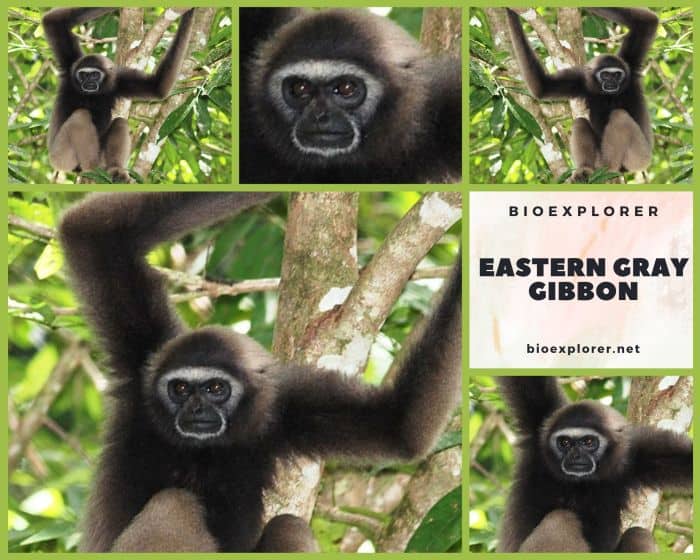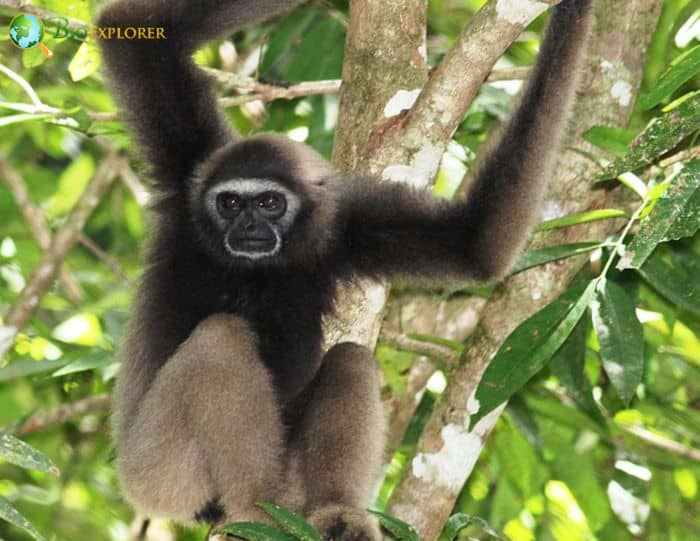
| Animalia | Primates | Hylobatidae | Hylobates | Hylobates funereus |


- Common Names: East Bornean Gray Gibbon, Northern Gray Gibbon
- Taxonomy Classification Year: 1850
- Monkey Size: 44 to 64 cm (17 to 25 in)
- Skin Color(s): Light brown
- Habitat: Forest, rainforest
- Diet: Herbivorous
- Native Countries: Borneo
East Bornean Gray Gibbon Distribution
Eastern Gray Gibbon Characteristics
The eastern gray gibbon[2], also known as the northern gray gibbon, is a primate in the gibbon family, Hylobatidae.
- Eastern gray gibbons have light brown fur that fades to black on the face, chest, and inner arms, with a white border around the face.
- They have padded buttocks and pronounced canines, and the base of the thumb starts at the wrist rather than the palm of the hand, allowing them a wide range of motion.
- However, this limits their ability to grasp small objects. Like all the great apes, these gibbons do not have a tail.
- Instead, among their most distinctive features are their very long arms, especially the elongated ulna and radial bones of the forearms.
- This trait, along with many other small skeletal changes, tailors the species to its method of movement: brachiation.
Eastern Gray Gibbon Facts

- Eastern gray gibbons are among the fastest non-flying arboreal mammals in the world, reaching speeds of up to 56 km/h (35 mph).
- They are so adapted to brachiation that when they run through the trees, they bring their legs close to their bodies to avoid getting in the way.
- On the rare occasions that these arboreal monkeys descend to the ground, they hold their hands above their heads for balance and to prevent their hands from dragging along the ground when walking on two legs.
- These gibbons spend little time socializing: only about 5 percent of their day is spent grooming and playing socially, which is relatively little for a primate species.
- As with the other two gray gibbon species, the eastern gray gibbon is endangered due to heavy deforestation in Borneo and increased wildfires exacerbated by El Niño events.
Suggested Reading: All Types of Apes
Cite This Page
APA7MLA8Chicago
BioExplorer.net. (2025, April 14). Eastern Gray Gibbon. Bio Explorer. https://www.bioexplorer.net/animals/mammals/apes/eastern-gray-gibbon/.
BioExplorer.net. "Eastern Gray Gibbon" Bio Explorer, 14 April 2025, https://www.bioexplorer.net/animals/mammals/apes/eastern-gray-gibbon/.
BioExplorer.net. "Eastern Gray Gibbon" Bio Explorer, April 14 2025. https://www.bioexplorer.net/animals/mammals/apes/eastern-gray-gibbon/.










